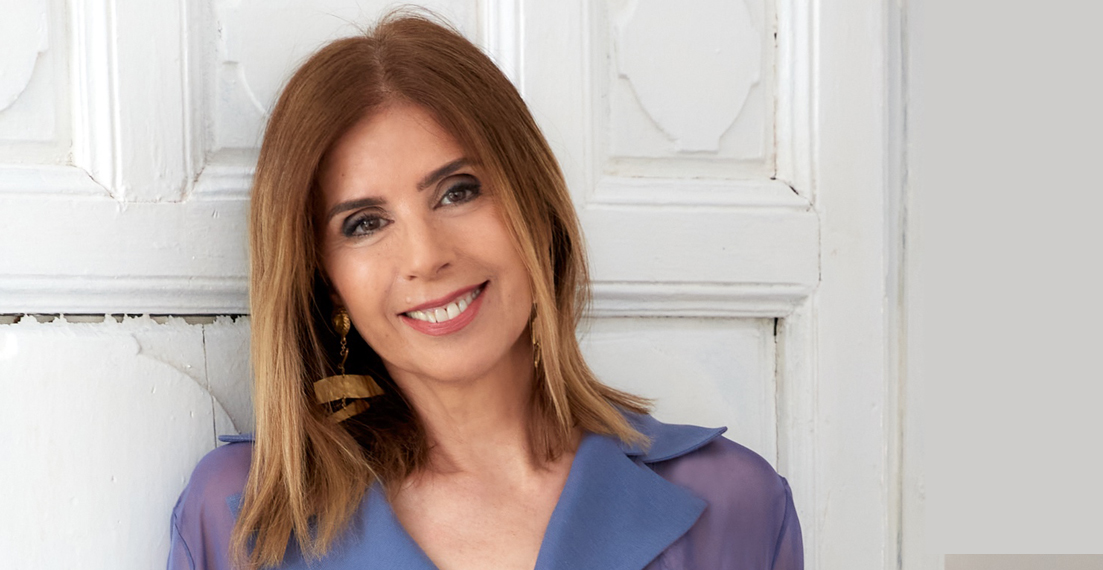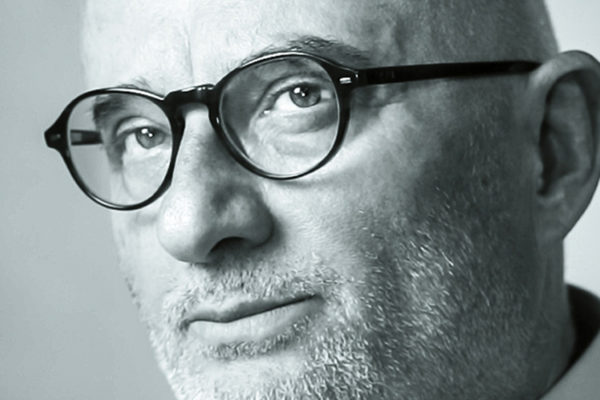
SUSANA CAMPUZANO: LUXURY AND PACKAGING, A PAIRING CONSTANTLY BEING REINVENTED
She is one of the most authoritative voices in Spain when it comes to understanding luxury.
I met Susana Campuzano on the Strategic Management and Administration of the Luxury World course at IE BUSINESS SCHOOL, an education experience I would strongly recommend to anyone who has professional contact with the world of luxury.
As well as directing this and other courses at IE, Susana has extensive experience in luxury in varying industries, such as cosmetics, perfumes, retail and fine jewellery.
She’s the author of two books that are must-reads for anyone who wants to learn about the sector: The Universe of Luxury, a global and strategic vision for professionals and lovers of luxury.(McGraw-Hill, 2003) and The Formula of Luxury (Lid Editorial e IE Business School, 2nd Ed. 2019), both in Spanish.
Since 2005, Susana has been heading LUXURY ADVISE, a boutique agency that offers comprehensive advice, specialising in the luxury, premium and high-end sectors.
All of this makes her one of the most authoritative voices in Spain when it comes to understanding luxury.
That’s why I feel extremely grateful – and privileged. Pardon the pun, but it’s a real luxury to have Susana accept this invitation and have a chat for Make Box.
We agreed to have a chat via video conference, but last-minute unforeseen circumstances made this impossible so we decided to use the traditional telephone, which is always a pleasure as it means we really get to concentrate on the depth of the other person’s voice. As such, we dived into an interesting chat, Susana from Madrid and me from Paris Packaging Week. This is how it went:
MakeBox: Susana, with all your great experience and vision in the luxury industry, it would be a real treat if you could give us your opinion on how the profile of the consumer has changed in the last ten years.
Susana Campuzano: The change has been enormous. Everything has changed from what it was like five years ago, so imagine what the comparison would be like if we compared things with 10 years ago.
There’s been a significant generational-cultural handover that’s determined a new world of luxury.
Broadly speaking, Generation X has an ostentatious understanding of luxury: status, brand and prestige were the main reasons to consume luxury products; a way of pertaining to and mimicking a certain social group. That’s what we’d call traditional luxury.
However, for millennials – the first digital natives born between 1982 and 1994 – luxury is perceived differently. For them, development of the individual compared with the statutory is more marked. There continues to be proximity to brands but it’s much more relaxed. They need a form of storytelling to be seduced.
Now these millennials have gotten older and given way to Generation Z, which has digitalisation in its DNA.
I would say this generation continues to be very brand-oriented but not at all statutory; indeed, this generation doesn’t make great distinctions between premium and luxury.
As a result, the major luxury emporiums are collaborating with other premium brands. For example, there’s the latest collaboration between Vuitton and Nike. Or there was even one in recent years between H&M and Lanvin. All of these synergies that seemed implausible with the mentality we had 10 years ago are increasingly natural with this new understanding of fashion and luxury.
Another aspect that sets Generation Z (now 32% of the world’s population and whose oldest members are around 27 years old) apart is that they are more rational, more economic people. They understand and practise the sharing, renting and second-hand economy.
They seek luxury experiences more than possessions. They have a vision of life close to hedonism and, in general, their approach to luxury is through digital means.
And among this amalgamation of visions and understanding – that coexist in time – is where new luxury is being forged, opening up to new and varied client categories that come to it in very different ways and with extremely diverse motivations too.
On the other hand, the pandemic has left us with a significantly more polarised economy. At one end of the scale we have luxury consumption focused on leisure, the need for ritual, experiences closely related with feeling better; while at the opposite end, we have a much higher category of luxury that demands highly personalised products.
We’ve seen luxury product consumption increase as a result of this ephemeral vision of life the COVID experience has left in us. For example, art and decoration have expanded considerably, while there has also been a revival of other sectors, such as luxury watches.
As you can see, the change has been enormous.
MakeBox: According to Daniel Kahneman , there are four well-defined stages in what he calls “the Ferris wheel of customer satisfaction”:
- The more we do, the more we spend, the more we want
- The faster we have it, the faster we want it
- The better a product, the more we realise what could be improved
- The more irrational demands we have met, the more irrational our demands become.
Susana, do you think these musings are still valid when we talk about new luxury consumers?
Susana Campuzano: We mustn’t generalise. The world is global but there are different stages in the way in which people approach luxury.
We could say that the Asian consumer – who is extremely important in the industry – is hooked on this dynamic. They continue to be “bulimic” with the new because they are still in that ostentation stage of luxury where novelty shows leadership. Owning the latest, the most recent product is what grants you status.
In Europe, however, other trends like styling have steered people more towards an expression of individual identity.
For example, there is a huge difference in style between someone going to the Oscars and a fashion runway. The styling we observe on runways is closer to an artistic expression of the individual and unique: combining brands, concepts, the new with the used – suddenly vintage is cool – big brands with niche or low-cost brands, to build something unprecedented, that each person believes in.
This is highly influenced by the world and the aesthetic conveyed by music stars.
Fashion is now a vehicle for self-expression, for creating a personal brand. And as part of that creation, it’s vital that the brand or product generates an experience for you.
Treatments in beauty salons, the retail shopping experience, the welcome at a hotel… These are key factors.
In this regard, packaging plays a central role because it’s more closely linked than ever before to the experiential.
In a society where there are scarce religious values and politics is in decline, this is all magnified.
During the pandemic we saw brands on the front line, launching positive messages and highlighting actions for society. We saw brands donating masks, gels, food… Connecting with their public almost constantly. Nowadays, people perceive values in brands more than in politics, the economy or religion.
MakeBox: Luxury and sustainability. Is this a pairing with a future? Is it just a trend or is there real awareness of the need for a gradual yet definitive change? What do you think, Susana?
Susana Campuzano: I think we’re increasingly aware of this subject; there’s even an entire investment trend in startups focused on sustainability.
There are some wonderful initiatives, with a lot of story telling.
The one by Linéa Design, which developed Human, a packaging concept that is now very much in vogue as a “second skin” in association with the 16th century paper mill Le Moulin du Verger in France.
The paper was handmade from recycled linen fibres from old sheets. It is really beautiful.
What’s happening is that sustainability is expensive: it requires a lot of investment in new processes and it’s not always visible; there’s a lack of knowledge around how to communicate all of this.
Additionally, in favour of luxury, this is the industry that’s led this trend we mentioned previously of reusing, of giving a thousand lives to luxury products, of restoring that “respect” for objects with a certain pedigree that we’d lost. Isn’t this what the principles of sustainability represent?
I believe brands are fully aware of the matter. The 2030 Agenda requires them to be and, above all, the consumer demands it.
Luxury is developing social responsibility at a good pace, in economic, social and ecological terms.
If exclusivity, quality and creativity were required of luxury up to this point for it to be considered as such, from now on, sustainability must also be an intrinsic characteristic of new luxury products.
MakeBox: To finish, a question that has to be asked: Luxury and packaging, talking about this pairing, what’s your opinion on their role in the new luxury?
Susana Campuzano: In my opinion, packaging acts as a new shop window because it’s the first contact we have with the product.
According to James Cropper’s study on the evolution of packaging, 65% of customers expect packaging to be a continuation of the luxury experience. Ten years ago it was 15%.
It’s a key element in the entire strategy, due to digital development and online sales as well as emotional development: the ritual, the contact…
At Luxury Advise, we feel it’s increasingly difficult to develop good packaging.
Segmenting, creating values, storytelling are rather easy, but developing product packaging is increasingly complicated. It needs to fulfil an endless number of characteristics that involve a multitude of disciplines.
Packaging has to convey the brand’s values, have a really creative component that sets you apart, be simultaneously functional and ecological; and after all that fits into the budget, it needs to be technically and productively feasible.
It’s really difficult to find experts who can give you everything at once.
It’s a wonderful challenge and one of the most important within the mix, but it’s also one of the most complex matters out there.
The current trend complicates everything a little further. Today, we’re far removed from that exaggerated luxury. Complexity isn’t valued so much, but the experience has to continue to be sublime. Combining these two qualities is really difficult. A lot of skill is required to do it. Before, things were simpler and we limited ourselves to the complexity of forms and decoration.
Closing the gap between packaging and the experience is synonymous with moving towards the delicacy and art of wrapping that Asian cultures have shared with us and has influenced many niche brands.
Packaging makes the digital seem closer and more experiential. But physical sales are also growing in identity. It’s really the quintessential distinguishing factor.
I’ll give you a clear example: In its new concept of boutiques, Chanel has made its wrapping section (the section for wrapping products, which generally is never visible in luxury stores) visible to everyone, placing even more value on it, giving it an identity and importance, making it a key element to favour the shopping experience.
Gifting, not only as the art of the gift, but also of self-indulgence. The box, the bag, the instructions, the little envelope… Everything makes a difference.
In fact, at the agency, we’ve had cases where the client confuses strategy with packaging, thinking that by redesigning a new package it’s all done, when in reality it forms a part of a whole. In short, I’d say it’s the summary, the ultimate expression of all that strategy work.
MakeBox: We’d love to hear a final thought from you, Susana, to finish off our chat.
Susana Campuzano: I think it’s important to be aware that we’re facing an enormous paradigm shift. What comes out on top in this mess of channels and consumer types is the product because its destinations are multiplied: retail, resale, auction, second hand…
Like art and antiques, products have a long life and become witnesses to what happened and we live with them. For me, personally, it’s the advantage I see in this post-modern world.
The value that brands provide is perceived as something that’s increasingly important and disruptive technologies are helping this to be further developed. The metaverse and NFTs (non-fungible tokens) are filtering into the luxury world at the speed of light.
One of the most recent examples is the REAVERSE project launched by Guerlain this year, which brings together the digital world, physical world and sustainability. The project sells 1828 Cryptobee NFTs and the income from it will be donated to the reconstruction project of an exceptional nature reserve in France.
Consequently, a luxury brand takes you by the hand and has you join a sustainability initiative, making you part of a committed community.
This is the new luxury, a luxury where the brand will have a growing amount of hospitality power. In the near future, it will be brands lending their names to hotels, cultural initiatives, rituals…
And in that sense, packaging has a great future.
MakeBox: It’s evident that if packaging has one thing, it’s the ability to adapt to the needs of the product and the moment in question. When it needed to shine and scream “brand”, it did it. Now, more discreet, delicate, detail-oriented, it takes us on a journey through a world of experiences. It will be interesting to return to this same question in a few years when the metaverse world, that we keep hearing about but don’t know much about, is more developed.
I was hoping for an interesting chat and I don’t think this will have let you down.
Thank you very much for your valuable time, Susana. It’s always a treat listening to you.
Carmen Yago
Marketing & ESG Director at Salinas Packaging Group


